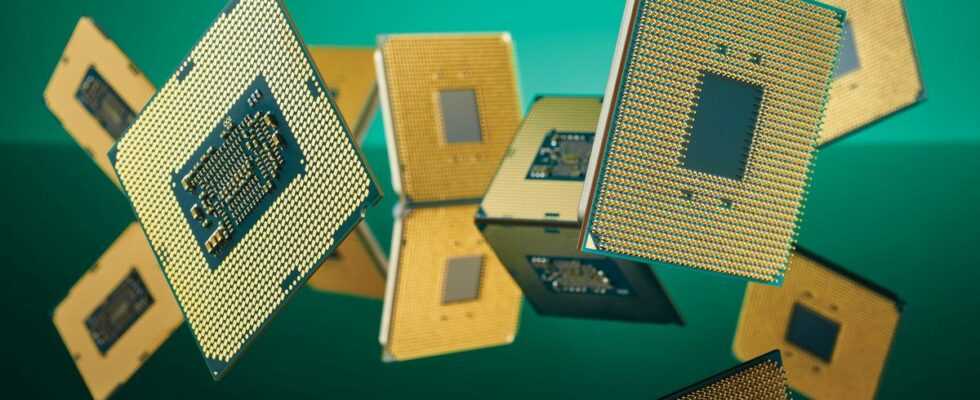While AMD Zen 4 processors haven’t arrived yet, the transition to Zen 5 could take longer than expected. In question, the inability of the founder TSMC to meet demand, Intel and Apple having already reserved 3 nm from 2023.
Recently, a real race for the miniaturization of semiconductors has been engaged by the big manufacturers. With its M1s, Apple was the first to switch to a 5 nm engraving fineness. AMD will use the same process with its Ryzen 7000 under Zen 4 architecture planned for the fall of 2022, while Intel is dragging its feet a bit with chips currently in 10 nm, which will not change at the end of the year with its Raptors. 13th generation Lake, also engraved in this way.
On the other hand, from 2023, Intel will offer its Meteor Lake chips which will combine several engraving processes with different tiles: a CPU engraved in 7 nm (Intel 4), another in 3 nm (TSMC N3) and a SoC part in 5 nm ( TSMC N5). Remember, however, that the fineness of engraving is not everything, and that it is above all the density of transistors per mm2 which really matters, Intel having nothing to be ashamed of in this area..
Intel, new big customer of TSMC
In this race, the Taiwanese founder TSMC is an essential player, since it is he who carries out the burning of Apple and AMD chips. Intel was independent until now, but the burning of its Meteor Lake processors will, as we have just seen, also be carried out in part by TSMC. In a context of supply difficulties with TSMC because of the global shortage of components and strong demand from manufacturers – we have seen AMD’s difficulties in delivering certain ranges of processors lately – Intel has just adding to a well-filled order book.
The calendar is therefore particularly busy in 2023 with, a priori, a passage of Apple chips from 5 to 3 nm; Intel will follow with its Meteor Lake in 3 nm (in part), while AMD finds itself between two fires to switch from its future Zen 4 (5 nm) architecture of 2022 to Zen 5 in 2023. other manufacturers such as Nvidia and MediaTek, which will also use 3 nm chips from TSMC, thus blocking the tunnel a little more towards this finesse of engraving.
What will AMD do?
According to a report from DigiTimes, Apple and Intel would have priority in the production of 3nm TSMC chips, and AMD therefore has little room for manoeuvre. The company could delay its Zen 5 architecture to late 2024 – or even early 2025 – by offering Zen 4 processors in 3D V-Cache in the meantime (as the company is currently doing with Zen 3 and its new Ryzen 7 5800X3D). Another option: not to offer a 3 nm design for its Zen 5, and instead use 5 nm chips optimized to the maximum. It could also be that AMD has managed to secure some 3nm chip production from TSMC, but so far only Apple has managed to curry such favors, which incidentally allowed it to not to suffer too much from the shortage and to deliver your MacBooks on time.
It’s hard to say how AMD will be able to manage such fierce competition, while Intel has greatly accelerated the pace and now renews its generations of processors every year. By the end of 2024, a lot can obviously happen on the market, between constraints and innovations. So we just have to wait until then, but in the meantime, the year 2022 should not disappoint us with the upcoming arrival of Apple’s M2s, then AMD’s Ryzen 7000s and Raptor Lakes from ‘Intel at the end of the year.
